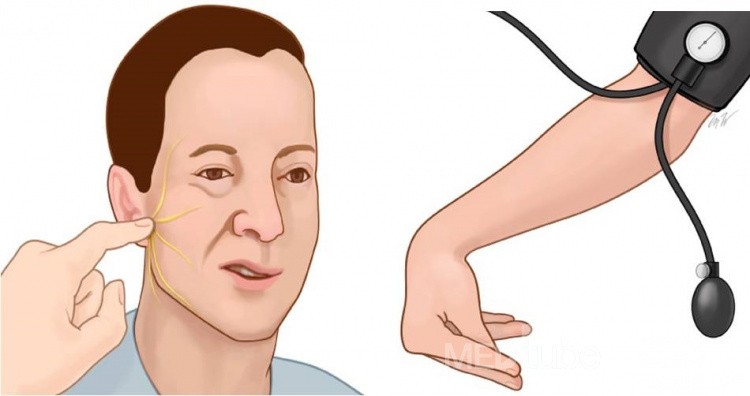A nurse is assessing a client for a positive Chvostek's sign following a thyroidectomy. Which of the following areas on the client's head should the nurse tap to assess the client for tetany?

The Correct Answer is B
To assess a client for a positive Chvostek’s sign, the nurse should tap gently on the cheek, specifically two centimeters in front of the ear, over the facial nerve (also known as CN VII). This test is used to check for hypocalcemia, a condition that can lead to tetany, which is the involuntary contraction of muscles. A twitch of the facial muscles in response to this tapping indicates a positive Chvostek’s sign. This is particularly relevant following a thyroidectomy, as the procedure can indirectly affect the parathyroid glands, potentially leading to hypocalcemia
Nursing Test Bank
Naxlex Comprehensive Predictor Exams
Related Questions
Correct Answer is B
Explanation
The nurse should obtain a blood pressure reading using only the left extremity from a client who has a right upper extremity arteriovenous fistula. An arteriovenous fistula is a surgical connection between an artery and a vein that is created for hemodialysis access.
Measuring blood pressure on the arm with an arteriovenous fistula can cause damage to the fistula, reduce blood flow, and increase the risk of infection or thrombosis. Therefore, blood pressure should be measured on the opposite arm or on another site such as the leg.
Correct Answer is B
Explanation
A 2-g sodium diet means limiting sodium intake to no more than 2000 mg per day. Sodium is found in salt and many processed foods, such as canned vegetables, soups, sauces, and baked goods. Sodium can cause fluid retention and worsen heart failure symptoms, such as shortness of breath, swelling, and fatigue. Therefore, the client should avoid adding salt or salt substitutes (such as baking soda) to their foods and choose fresh or frozen vegetables over canned ones. Lemon juice is a low-sodium alternative that can add flavor to foods without increasing sodium intake.
Whether you are a student looking to ace your exams or a practicing nurse seeking to enhance your expertise , our nursing education contents will empower you with the confidence and competence to make a difference in the lives of patients and become a respected leader in the healthcare field.
Visit Naxlex, invest in your future and unlock endless possibilities with our unparalleled nursing education contents today
Report Wrong Answer on the Current Question
Do you disagree with the answer? If yes, what is your expected answer? Explain.
Kindly be descriptive with the issue you are facing.

